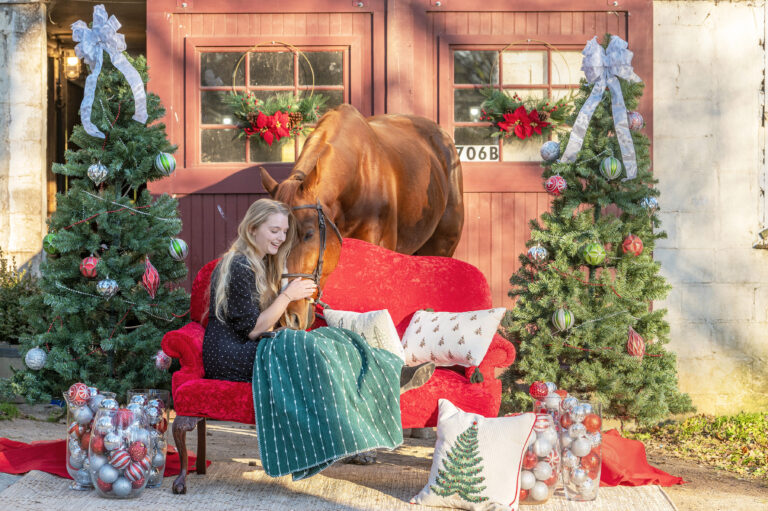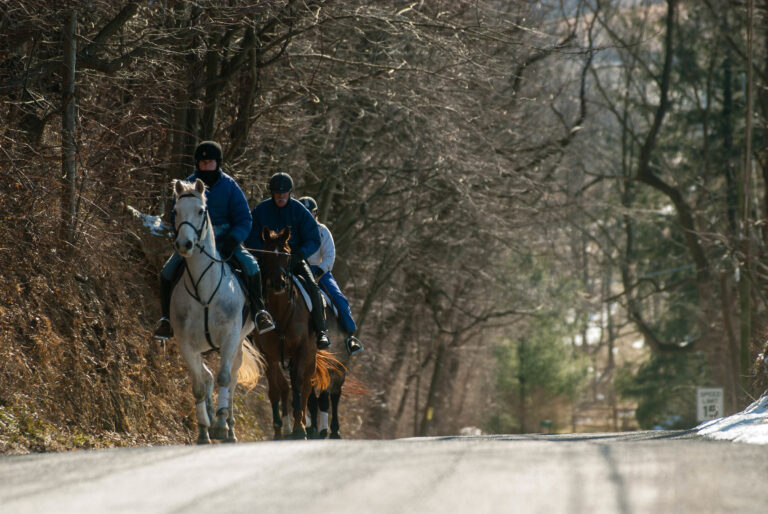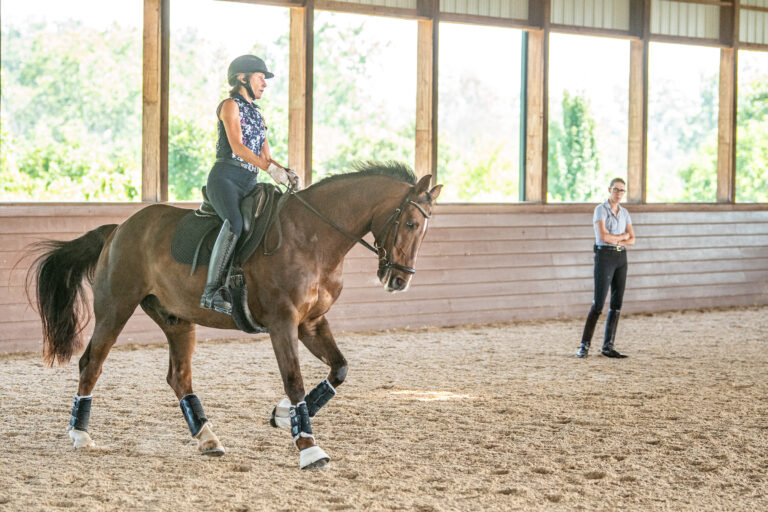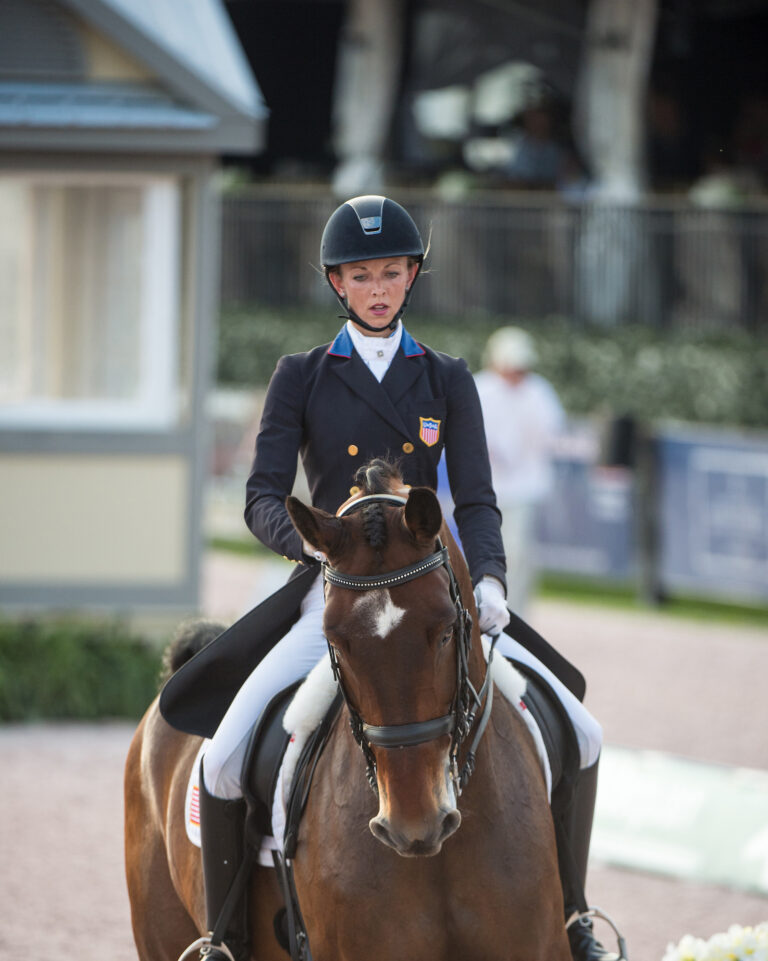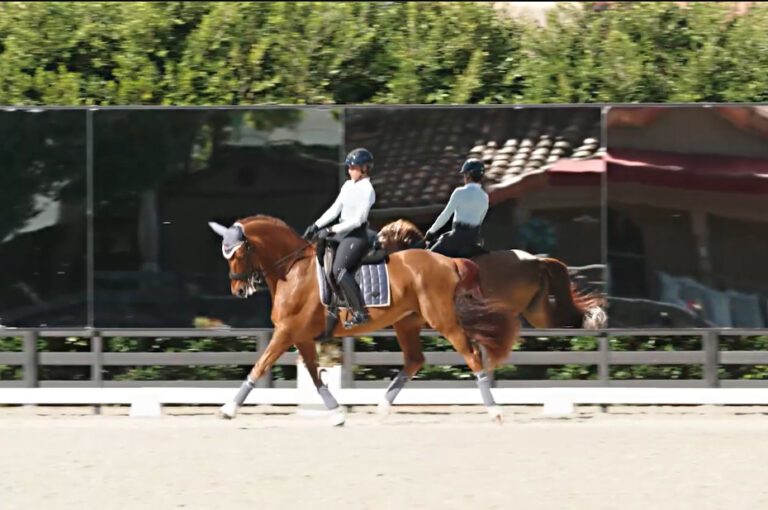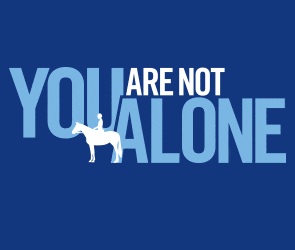Most dressage enthusiasts will be familiar with the blood, sweat and tears tale of Laura Graves and her Verdades (Florett As X Liwilarda by Goya). Together with her mother, then 15-year-old Graves purchased Verdades as a weanling directly from his breeder, the late Peter Jan (Piet) Crum of Herveld, The Netherlands, in 2002. Over the next decade, Graves would almost give up on the challenging bay gelding (and her competitive dressage dreams) many times, but they stuck together, eventually landing a spot on the 2016 U.S. Olympic team.
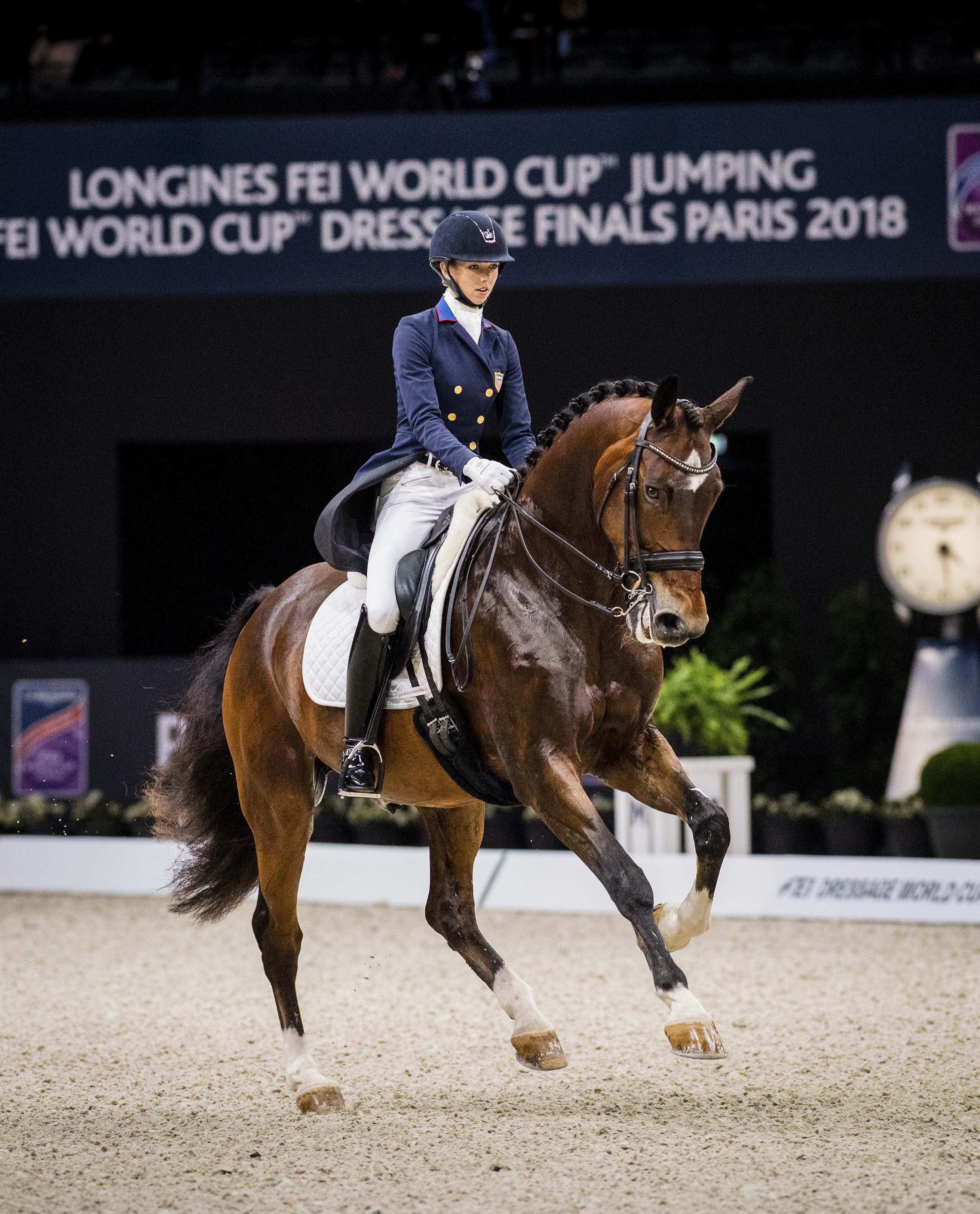
(Arnd Bronkhorst – arnd.nl
)
In Rio, Graves and Verdades were part of the bronze-medal-winning team, placing fourth individually. Other notable placements include fifth at the World Equestrian Games in 2014 (Grand Prix debut year), silver at the 2015 Pan American Games and an individual bronze medal at the 2017 World Cup in Omaha, Nebraska. One might say their notable international success is surprising in the best possible way. A look at Verdades’ pedigree reveals bloodlines equally surprising.
Going Dutch
. KWPN stands for Koninklijk Warmbloed Paardenstamboek Nederland, which translates as Royal Warmblood Horse Studbook of The Netherlands. KWPN-NA stands for KWPN North America. KWPN horses like Verdades are commonly referred to as Dutch Warmbloods, and there are three among our Top 11 horses, which merits an exploration of this studbook and its priorities. Johan Knaap, KWPN director, provides an overview: “KWPN distinguishes the following characteristics in our breeding goal: performance, health, conformation and character. Horses are strictly selected according to these standards.” Knaap also explains that the KWPN distinguishes a separate breeding standard for each breeding direction, providing descriptions for the ideal dressage, jumping, harness and the Gelders (all-purpose) horse. He says, “The functional aspect for the sport is our starting point. For example, does the height of the withers affect the horse’s ability to learn or execute what he’s being asked to perform? If so, the breeding standard will reflect the ideal height of the withers.” According to Knaap, these standards are not set in stone. He explains, “New scientific research, forward-looking insights and market trends are all developments that may or may not lead to a reconsideration of the breeding standard.” Knaap says developments within the FEI are closely monitored. For example, after the advent of the musical freestyle, KWPN saw more horses with strikingly graceful and elegant movement and lots of expression, which shifted goals for dressage horse breeders. Knaap says, “Besides strict selection with respect to conformation and movement, character is also an important aspect. A horse must be intelligent, honest, have a pleasant temperament and will to perform.” He adds that KWPN considers health aspects strictly and consistently when selecting horses—a policy that without any doubt has contributed to KWPN success. According to Faith Fessenden, former KWPN-NA judge and longtime chair of KWPN-NA’s Education Committee, “A priority for Dutch breeders has always been to have a top-quality product in the sport horses produced. Within any given discipline, Dutch breeders will focus on the bloodlines that have proven themselves as well as on the conformation and movement that are successful in the show ring. Breeders often ask themselves: What will place, and, therefore, what will sell?” Natalie DiBerardinis, managing director at Hilltop Farm, Inc., in Colora, Maryland, points out that KWPN success can be partially attributed to the studbook’s clear goals. For example, it’s stated that the goal of the dressage breeding program is to produce horses for the Grand Prix ring. Though she points out that this level of specialization can have pros and cons, DiBerardinis says that KWPN has made impressive progress since beginning specialization. She also applauds the KWPN for being progressive (scientific-minded) in its use of linear scoring to evaluate breeding stock since the 1990s, a technique that gives breeders an exceptional amount of transparent data about potential breeding stock.
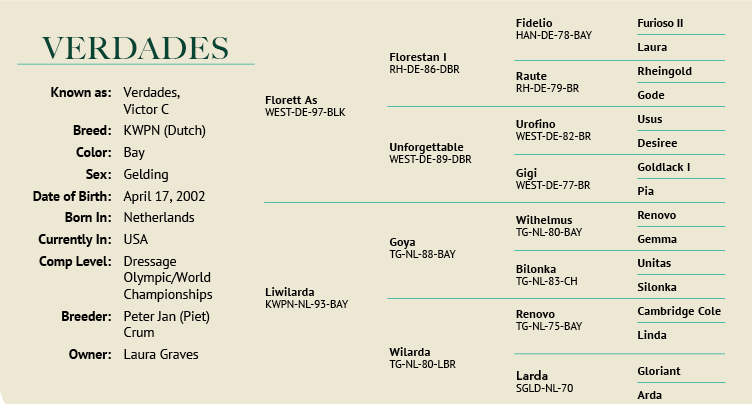
Natalie DiBerardinis is managing director at Hilltop Farm, Inc., an elite sport-horse breeding, training and sales facility located in Colora, Maryland. She holds leadership positions with multiple North American breeding associations, including serving as a member of the KWPN-NA stallion committee. According to DiBerardinis, Verdades’ sire, Florett As, reflects more traditional sport and dressage horse lines, while his dam, Liwilarda, lends bloodlines that DiBerardinis calls “interesting and less well known.” Beginning with the top side, DiBerardinis explains: “Verdades’ sire, Florett As, was a Westphalian-based stallion. As a young horse, he was quite precocious and finished third overall in his stallion test and won the dressage portion. Later he placed third at the Bundeschampionate in Germany in dressage. He stood in both Holland and Germany at different times, but was not utilized heavily for breeding. Considering his smaller breeding record, Florett As has a good record for producing Grand Prix horses.”
According to DiBerardinis, Verdades’ grandsire, Florestan I, was a much more renowned and prolific stallion. Florestan, a Rhinelander who was also approved through most of the major registries, sired more than 60 approved sons in Germany alone. DiBerardinis says, “Florestan is known for producing offspring who have three good gaits, good work ethic and talent for dressage. His offspring also tend to be versatile and also have good jumping ability. We see his lines trace back to Furioso, an English Thoroughbred stallion who was based in France in the 1940s and had an incredible influence on the production of show jumpers in Europe.”
DiBerardinis explains that the pedigree of Unforgettable, Florett As’ dam, also reflects show-jumping lines, tracing back to stallion Pilatus, founder of the Westphalian P-lines. (Pilatus was bred in Holland and sired the international show jumper Roemer, who would later come to Iron Spring Farm in the U.S. and go on to a Grand Prix dressage career.) Like several of the horses analyzed thus far in this series, the top side of Verdades’ pedigree reflects the influence of horses known for dressage along with a smattering of jumping-horse lines.
It’s with Liwilarda, Verdades’ dam, that this pedigree takes an unusual turn. Faith Fessenden, former KWPN-NA judge and longtime chair of KWPN-NA’s Education Committee, weighs in: “Through Liwilarda, we see the influence of the Dutch Harness Horse in Verdades’ pedigree. Dutch Harness Horses are carriage horses with high knee action, developed some generations back with influence from the Gelders Horse.” The Gelders Horse is a heavier warmblood type originally bred for both versatility and style: these horses needed the strength and stamina to work farms but also enough refinement and action to be stylish carriage horses. Fessenden says it’s not at all unusual for Gelders to influence the breeding of modern Dutch Warmbloods, but it is somewhat exceptional to have this much Harness Horse influence so close in the pedigree of an Olympic dressage horse. Fessenden explains, “Liwilarda’s sire, Goya, brings the stallion Oregon to the table—five times if you go back seven generations. Oregon was a strongly built chestnut with sturdy legs and feet, with lots of white, impressive in type and movement. He became the foundation stallion for the classic Gelders Horse. Goya’s grandsire, Renovo, was the successor to that accolade as the modern Gelders/Harness Horse foundation stallion. Renovo, a bay, was well built, refined, handsome and brought more elegant and light-footed movement. His sire, Cambridge Cole, was a well-bred English Hackney, which combined well with the classic Gelders Horse.”
According to Fessenden, Liwilarda’s dam line brings Renovo into the pedigree again, closer this time, as her maternal grandsire. She explains line breeders are enthusiastic about a significant horse like Renovo coming “down” in the sire line and “up” in the dam line. “Down” refers to the influence descending through stallions, while “up” refers to the influence ascending through a mare. Both experts agree that Renovo lends articulation and expression to the action of his offspring with lots of hock and knee action as well as a lovely, upright sort of neck.
Fessenden reflects on the sire line of Verdades: “Through sire Florett As, the building blocks for a quality performance horse are blended for talent, suppleness, movement and rideability from greats such as Florestan I [approved in seven studbooks]. From the KWPN dressage breeder’s perspective, the only wish for improving the Florestan I lines would be for more power from behind with a quicker and stronger hind leg.” Fessenden explains that the combination of this sire line with “powerhouse” Gelders blood is dynamic. She says, “In Verdades, it all came together to create this ‘WOW’ horse—presence, movement and good feet! But breeders must be aware that breeding two types—riding and harness horse—together is not a guarantee of such a success story.”
In this case, both experts agree that the quality of the mare, Liwilarda, is a crucial factor: She’s proven her ability to produce successful foals sired by approved dressage performance stallions. Fessenden points out that several of this mare’s 11 foals are performing upper-level dressage in both Holland and Germany and two of her daughters have earned their ster predicates from KWPN.
Predicates
. According to Johan Knaap, KWPN director, “KWPN horses are so successful at the top levels of international dressage thanks to strict selection by both our studbook and our breeders. This has resulted in strong dam lines, in which performance is deeply rooted. The predicate system is unique: No other studbook distinguishes the qualities of their mares in this manner. Every predicate has a different meaning and entails different requirements to receive the predicate.”
Predicates reflect various aspects of the KWPN breeding goals. Some are earned by the horse, others are earned through offspring. For example, at the time of inspection, a horse can be awarded a ster predicate, indicating the horse has above-average conformation and movement and/or jumping ability. Liwilarda, Verdades’ dam, is distinguished with a ster predicate. Awarding of this predicate is based on the number of points the horse has earned in these categories and requires a minimum height of 160 cm (15.3 hands). Wilarda, Verdades granddam, earned three predicates: keur, pref and prest. Keur indicates conformation higher than for ster and the completion of performance testing or equivalent sport requirements. Pref is a predicate awarded to KWPN-registered mares who have produced three offspring who have earned the ster predicate. Prest is a predicate awarded to KWPN-registered mares who have three offspring earning a combined minimum of five points in various performance tests/open competitions. Pref and prest predicates can be awarded posthumously.
DiBerardinis underscores that Liwilarda descends from royal blood—her dam, Wilarda, and granddam, Larda, were both awarded a keur, prest and pref predicates (higher designations even than ster). According to DiBerardinis, “Liwilarda is a mare who brings a lot to the table—much more so than you might think with a first glance at her pedigree.”




